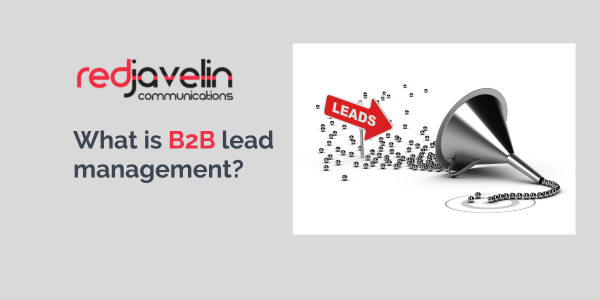 Lead management is the backbone of any successful sales operation. Lead management is a process of acquiring lead information and managing interactions with them. It involves capturing leads from multiple sources, qualifying them, distributing them to sales reps, and tracking and recording interactions, such as emails, ad clicks, website visits, phone calls, demos, and face-to-face meetings. It is a complex process that requires several strategies and techniques. In this article, we discuss nine essential steps to effective lead management.
Lead management is the backbone of any successful sales operation. Lead management is a process of acquiring lead information and managing interactions with them. It involves capturing leads from multiple sources, qualifying them, distributing them to sales reps, and tracking and recording interactions, such as emails, ad clicks, website visits, phone calls, demos, and face-to-face meetings. It is a complex process that requires several strategies and techniques. In this article, we discuss nine essential steps to effective lead management.
Nine Essential Steps for Success
1. Segment Your Database - The first step in lead management is to segment your database in your CRM system. Segmentation involves dividing your database into groups based on specific criteria. By dividing your database into groups based on demographics, location, industry, and interests, you can create messaging that resonates with each group's unique needs and interests and send targeted and personalized messages to each group at each stage of the buying process. This increases the chances of engaging your leads and building a relationship with them over time.
Segmentation also enables you to prioritize your efforts and focus on high-potential leads. By identifying which leads are most likely to convert, you can allocate your resources more efficiently and increase your chances of success.
Lastly, it helps to improve customer retention. By segmenting your existing customers, you can identify their unique needs and preferences and create messaging that resonates with them. This increases the chances of retaining their business and improving customer loyalty.
2. Capture the Right Info on Forms - Forms help to gather important information about potential customers that can be used to tailor marketing efforts and move them through the buying process. In B2B, this goes beyond capturing their name, email, and company and may include title or job function, budget info, and buying time frame. It allows you to personalize your marketing efforts, better qualify leads, and give sales teams the information they need to understand the prospects' needs better. They can tailor their sales approach accordingly by providing your sales team with detailed information about each lead. This increases the chances of closing the sale and improving customer satisfaction.
3. Document your Sales Process -Document a sales process for all leads. Why is this important? Documenting your sales process helps to ensure that every lead receives the same level of attention and is not overlooked. This consistency results in a more efficient and effective sales process, as all representatives are working towards the same goal.
This process helps companies understand customers' pain points and requirements at each step of the buying journey. And by doing so, they can propose a solution that can serve their customers' needs. It outlines the steps your sales team will take to convert a prospect into a customer and may differ depending on the length of the sales cycle, product or services, or the way the lead was generated. Once you can document your sales process, then you can measure it.
4. Implement Lead Scoring - Lead scoring is critical in B2B sales, especially since many B2B sales have longer sales cycles. Lead scoring is a technique used to rank leads based on their level of interest and engagement. It is a process of assigning a numerical value or score to each lead based on their behavior and engagement with your company's marketing and sales efforts. Lead scoring lets you prioritize your efforts and focus on the most qualified leads.
5. Automation to Move Prospects Through the Buying Process - Automate lead nurturing to move prospects through the buying process by using marketing automation tools to send targeted and personalized messages to prospects at each stage of the buying process. This helps to keep your brand top of mind and build trust with your prospects.
6. Provide Email Templates for Sales – Marketing needs to provide email templates s to establish sales sequences. A sales sequence is a scheduled series of sales touchpoints using phone calls, emails, and SMS messages, as well as other tasks that are delivered at a pre-defined interval over a particular period of time. The goal of a sales sequence is to generate a sales conversation with qualified prospects and set up meetings for further discussions. Typically, sales reps use sequences to schedule and manage their outreach to leads and prospects and then use them following demos.
Sales sequences establish activities and timing, eliminating all guesswork so salespeople always know what to do next and can continually move each prospect through the buying journey without missing a beat. Sequences also establish standards and best practices for your sales team. This means that the outcomes and effectiveness of outreach patterns and messaging can be measured and optimized for success.
Email templates used in sales sequences save time and ensure consistency in messaging. They also help to ensure that all sales communications are on-brand and aligned with your marketing efforts.
7. Give Sales Supporting Sales Content – Sales needs supporting sales content. Sales content includes case studies, product comparisons, whitepapers, and other resources that continue to educate and inform prospects. This content should be readily available to your sales team and used in their sales efforts.
8. Create Reports to Measure Conversions - Create reports to measure conversions. This involves tracking the progress of leads through the sales funnel and identifying areas for improvement. Reports can include metrics such as lead conversion rates, average deal size, and sales cycle length. These reports help to identify trends and make data-driven decisions.
9. Optimize the Process – If you can measure a process, then you can optimize the process. By continual optimization, your efforts will become more efficient and streamlined, decreasing time to revenue.
Effective lead management is critical to the success of any business. By implementing these essential strategies, you can streamline your lead management process, improve your conversion rates, and grow your business.
Do you need help with your lead management process? Start with a Hubspot Health Check!




